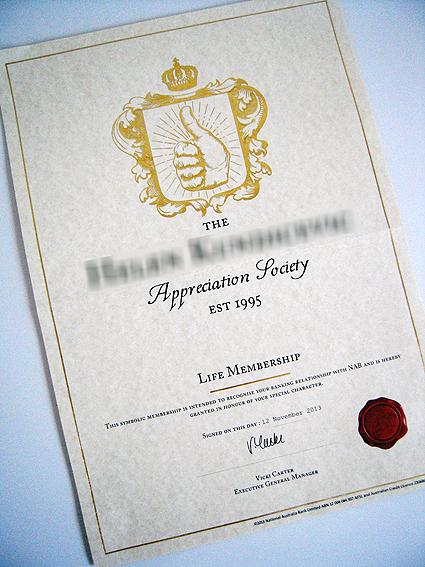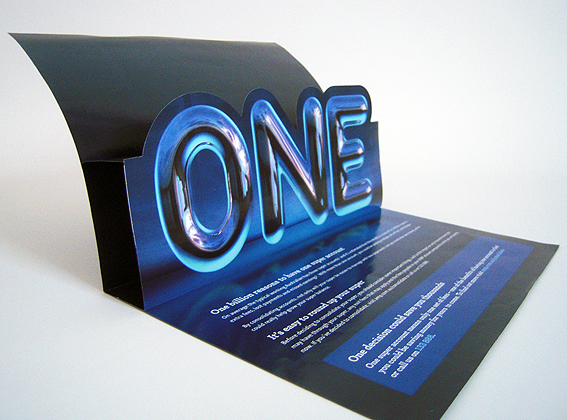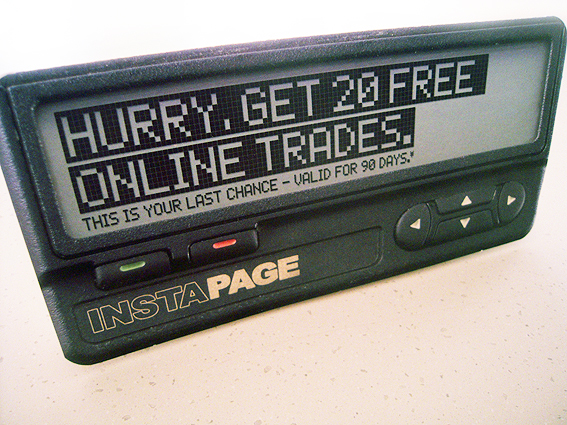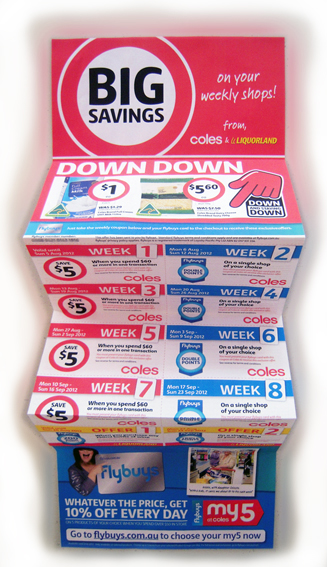There’s a bank handing out fake Life Membership certificates to its customers, a conceit so confusing and poorly executed it makes me want to hand them a great big trophy for the ‘Worst Direct Mail of the Year’. A bit of foiling and embossing can’t disguise what a crock this is.
OK, so it’s just a bit of a laff, a cheesy attempt by a bank to say something nice to its customers, which is not easy when you’re busy out-sourcing operations overseas while making billion dollar profits off poor saps who don’t know what they’ve signed up for. Perhaps that explains why this example is so cack-handed. It takes practice to be friendly in a genuinely human-to-human way. Instead the bank has resorted to forced fakery, taking a punt that the customer will receive the communication in the right spirit, a hope based on nothing more than guesswork and a deluded belief in the hilarity of its own marketing.
Putting the goofiness aside, let’s just look at it seriously for a moment on its own terms, because a lot of money has been spent on creating this fakery and sending it out. It must mean something, must have something to say for itself.
So, as far as I understand it, this is a certificate sent to the recipient – let’s pretend the blurred bit says Harry Knobbleknees – to inform Harry Knobbleknees that he has been granted life membership of the Harry Knobbleknees Appreciation Society by the bank. It’s said to be a “symbolic” membership and has been granted “in honour of your special character”.
Some questions readily spring to mind, most pressingly as to why Harry Knobbleknees would want to be a member of his own Appreciation Society? Isn’t that just a trifle narcissistic? Who formed this society anyway and why has it been left to the bank to hand out memberships? How many other members are there? Is it just Harry Knobbleknees and the bank? How sad is that.
What the hell is a “symbolic membership” anyway? Presumably it gives Harry Knobbleknees symbolic entry to the Society’s symbolic meeting room and a symbolic vote at the AGM. For life.
And why is Harry Knobbleknees being given life membership of his own appreciation society in recognition of his “banking relationship” with the said bank? Does that mean he would be denied membership if he didn’t have such a relationship? That’s a bit cruel. Just who the hell put the bank in charge anyway? I bet Harry Knobbleknees didn’t vote for them.
Also, how come the bank is so sure that Harry Knobbleknees has a “special” character? Are they spying on him? For all they know, he might be very ordinary indeed. And proud of it. And if they don’t know, does that mean the bank is lying when it says it is honouring his character? Would you give your money to a bank that tells lies?
Perhaps instead of running the Harry Knobbleknees Appreciation Society, the bank should just get on with doing bank-like things. You know, like making sure there are enough tellers in the bank so that Harry Knobbleknees doesn’t have to queue up every time he visits the bank, or making sure that drug cartels aren’t shovelling billions of dollars through their accounts without anybody noticing.
It is hard to get people to take notice of direct mail. It can be very irritating. But there’s no point in getting customers to look at stuff if the message is muddled or meaningless; save the money and spend it on something that they might really appreciate, like better customer service.






